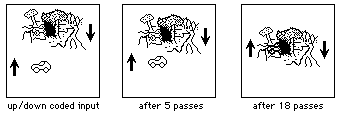
Figure 14: Cross-scanning of the pseudo-landscape and the reference feature to locate equivalent target features
The most powerful possible application is in a matching scheme for feature recognition in complex images, where a large image is raster-scanned with a smaller reference feature to locate target features equivalent to the reference. We here make use of the complete independence of different quarter-pixel representations of the two images to enable them to be cross-scanned without interference. Figure 14 shows a pseudo-landscape containing a target feature, which is first converted into down quarter-pixels and swept downwards, and a search feature (the small car) which is first converted into up quarter-pixels and then swept upwards.

Figure 14: Cross-scanning of the pseudo-landscape and the reference feature to
locate equivalent target features
The combined image is passed through an AND2 plane, and the total output intensity is observed. When the summed output from the AND2 plane equals the search feature pixel sum (in this case the car is constructed out of 63 pixels), an equivalent feature has been found in the pseudo-landscape, and it appears in the output plane in its correct location (figure 15).

Figure 15: Progressive build-up of the equivalent feature combination as the
pseudo-landscape and the reference are cross-scanned
A basic problem with binary pixel image representation is evident if the
progressive build-up of the output is observed (figure 15); ANY
black-defined feature will fit to a solid black background; in this example a
match for the back of the car is found over a wide range of combined images
because of the completely black area in the original pseudo-landscape.
The (possible) solution to this kind of problem lies in representing the image
as grey-coded instead of binary pixels, but with conventional schemes this
imposes a spatial incoherence between the image and its grey-coded
representation.
This is of fundamental importance in a processing arrangement where spatial
relationships must remain the same throughout, as in the scheme described here;
an applicable grey-coding representation must be spatially centrosymmetric (or
at least four-fold symmetric).